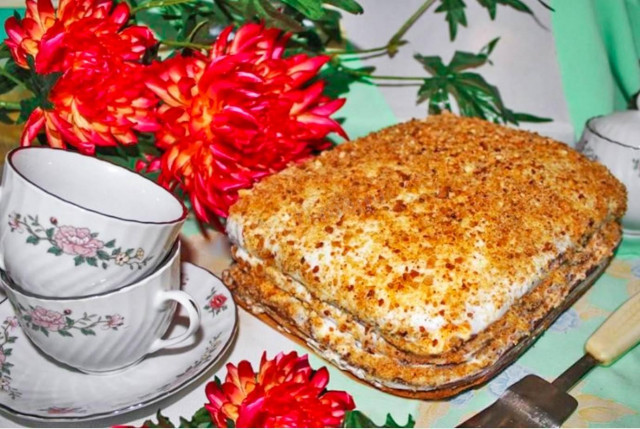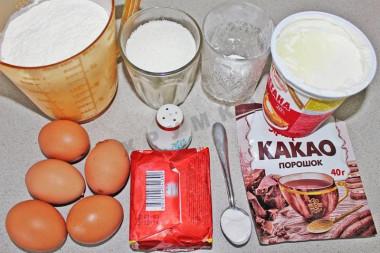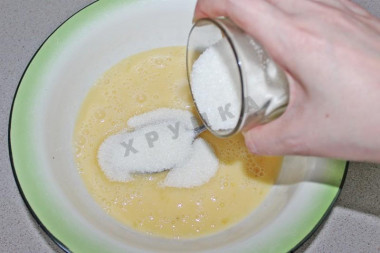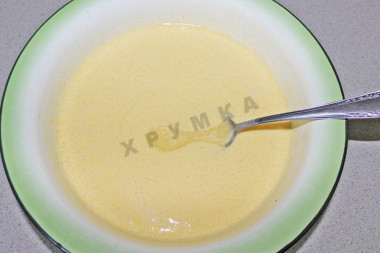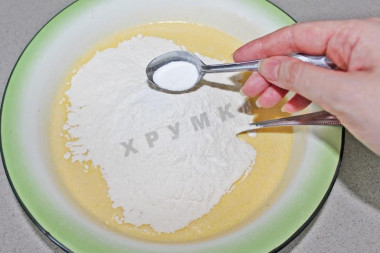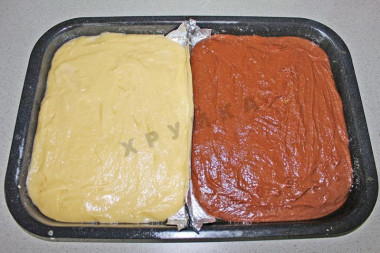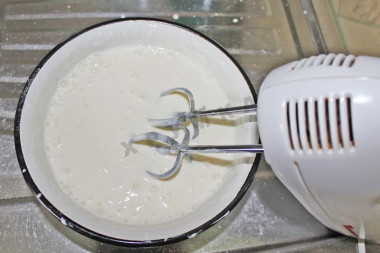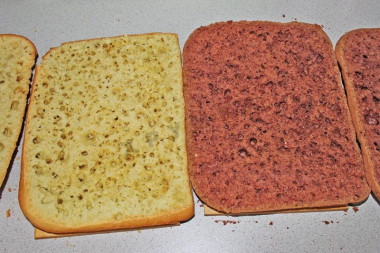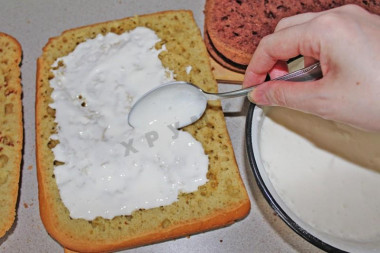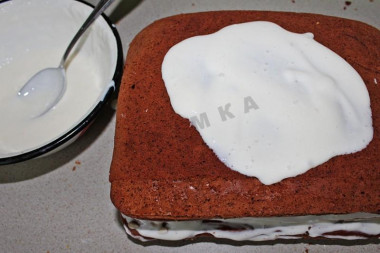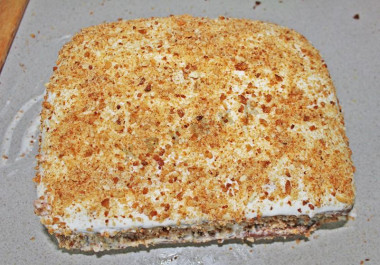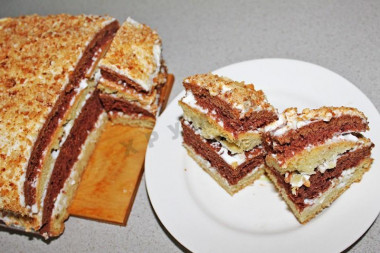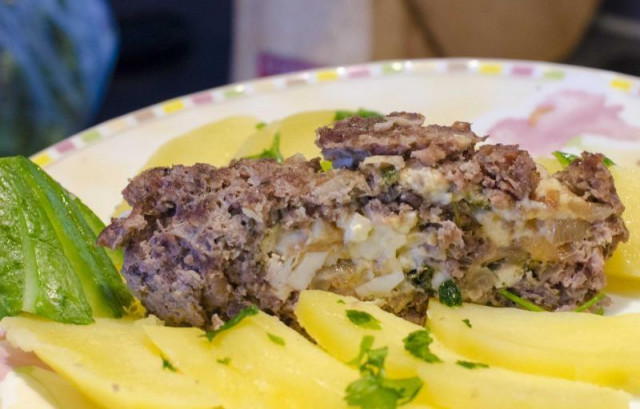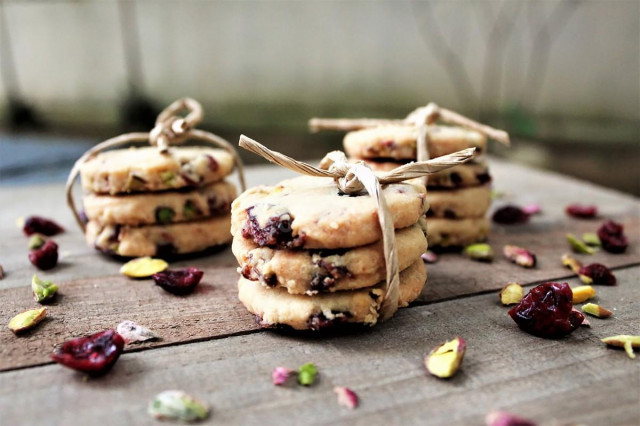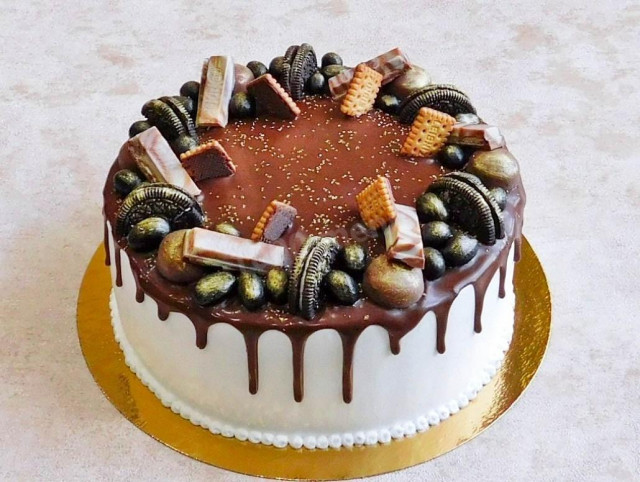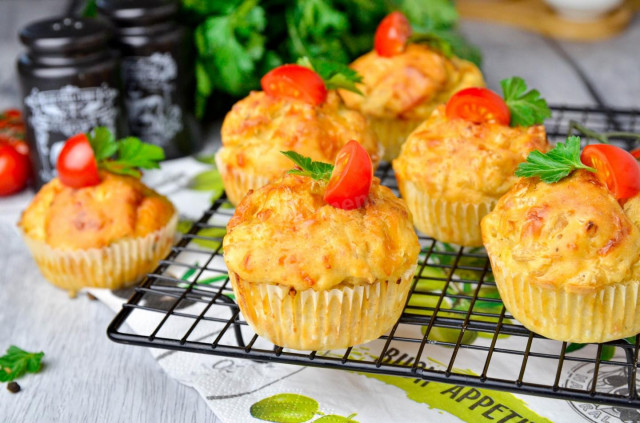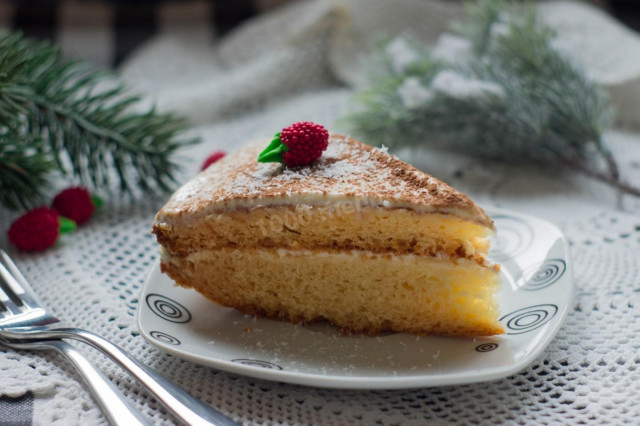Composition / ingredients
Step-by-step cooking
Step 1:
How to make a Novelty cake? Prepare the ingredients. The classic recipe used margarine, but you can replace it with butter. Choose high-quality, natural products that comply with GOST.
Step 2:
First of all, prepare the dough for the cakes. How to make dough? Beat eggs with sugar with a whisk or mixer until fluffy light mass. Be sure to wash the eggs before use, as even the seemingly clean shell may contain harmful bacteria. It is best to use food detergents and a brush.
Step 3:
Add the melted margarine or butter, mix. You can melt them in the microwave or in a water bath.
Step 4:
Add dry ingredients: sifted flour, salt, soda. It is important to sift the flour to saturate it with oxygen. Then the baking will turn out to be airy and will rise well when baking. Mix the products well to get a homogeneous mass.
Step 5:
Divide the dough into 2 parts, add cocoa to one part, mix. Take natural cocoa, a drink like Nesquik will not work. Grease the mold with oil, pour the dough into it. Put it in a preheated 180 degree oven and bake 2 cakes: light and with cocoa for 20-30 minutes, navigate by your oven. You can bake them separately, or you can on one baking sheet, separating them with a foil rim.
Step 6:
Prepare the cream. How to make a cream? Whisk the sour cream with powdered sugar, put it in the refrigerator. Sour cream is better to take fat and thick, then the cream will not flow.
Step 7:
Cut the finished and cooled cakes into 2 more cakes, you will get 2 light and 2 dark.
Step 8:
Assemble the cake. Cut off the uneven edges — leave them for sprinkling the cake. You can add nuts, raisins or grated chocolate to the cream according to your taste.
Step 9:
Smear the cakes with sour cream, alternating colors.
Step 10:
Decorate the top of the cake with biscuit crumbs. Put the cake to soak in the refrigerator for a few hours.
Step 11:
The cake is ready, bon appetit!
Be prepared for the fact that flour may need more or less than indicated in the recipe. Focus not on the amount of flour, but on the desired consistency of the dough. To avoid mistakes, read about flour and its properties!
Keep in mind that everyone's ovens are different. The temperature and cooking time may differ from those specified in the recipe. To make any baked dish successful, use useful information about the features of ovens !
Is it possible to replace baking powder with soda, how to add them correctly so that the baking is lush, how to avoid an unpleasant soda taste and much more, read the article "Baking powder or baking soda - which is better?"
Calorie content of products possible in the dish
- Sour cream with 30% fat content - 340 kcal/100g
- Sour cream of 25% fat content - 284 kcal/100g
- Sour cream with 20 % fat content - 210 kcal/100g
- Sour cream of 10 % fat content - 115 kcal/100g
- Sour cream - 210 kcal/100g
- Chicken egg - 157 kcal/100g
- Egg white - 45 kcal/100g
- Egg powder - 542 kcal/100g
- Egg yolk - 352 kcal/100g
- Ostrich egg - 118 kcal/100g
- Whole durum wheat flour fortified - 333 kcal/100g
- Whole durum wheat flour, universal - 364 kcal/100g
- Flour krupchatka - 348 kcal/100g
- Flour - 325 kcal/100g
- Granulated sugar - 398 kcal/100g
- Sugar - 398 kcal/100g
- Table margarine - 720 kcal/100g
- Cream margarine - 720 kcal/100g
- Milk margarine - 743 kcal/100g
- Low-fat margarine - 384 kcal/100g
- Margarine sandwich - 688 kcal/100g
- Margarine for baking - 675 kcal/100g
- Margarine dietary - 366 kcal/100g
- Margarine bold 40 % - 415 kcal/100g
- Margarine - 720 kcal/100g
- Cocoa powder - 374 kcal/100g
- Salt - 0 kcal/100g
- Powdered sugar - 374 kcal/100g
- Baking soda - 0 kcal/100g

